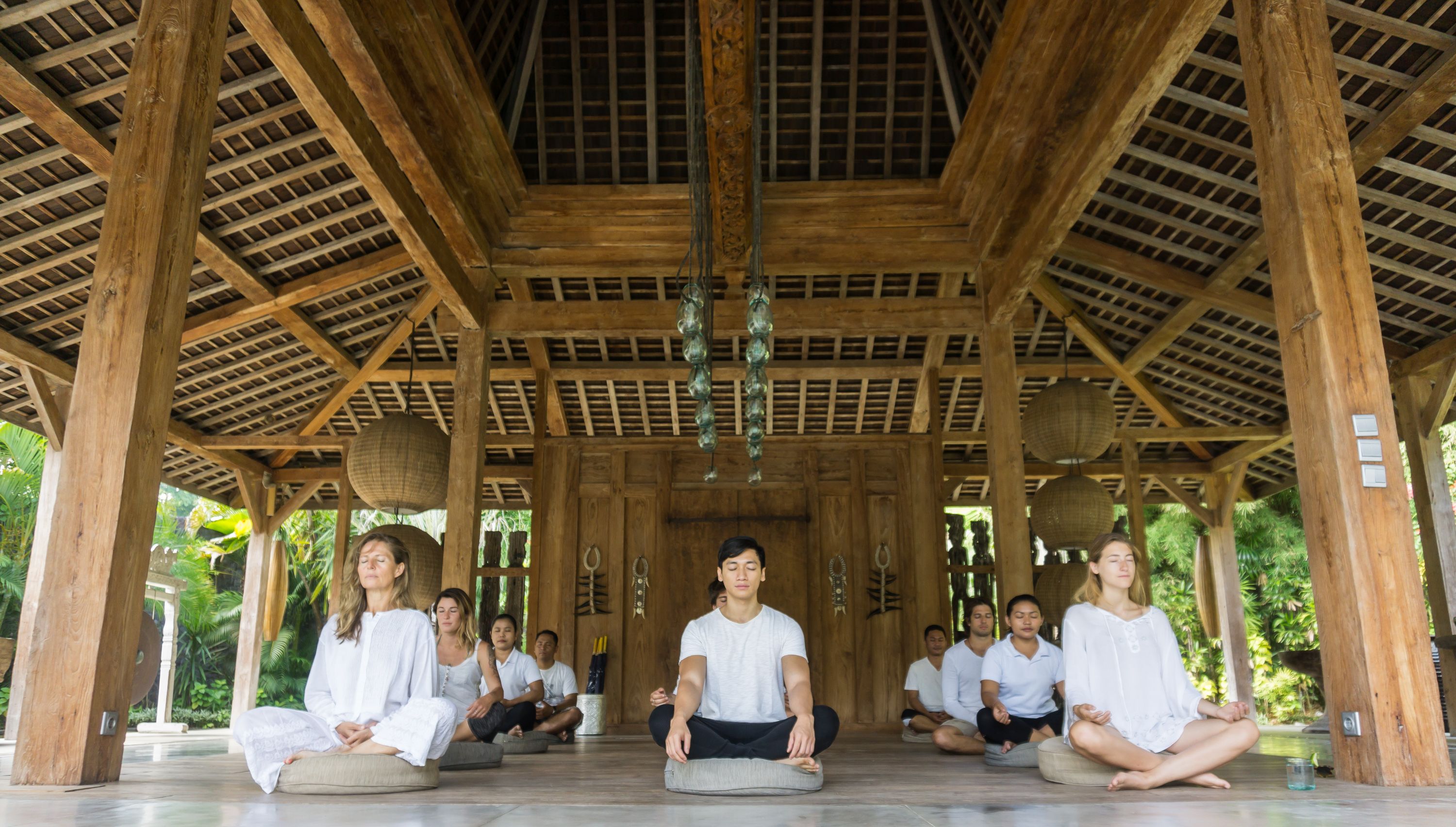Blue Karma Wellness: Foundations of Yoga
by Blue Karma

Let's break a few myths and bring back the truth about this ancient traditional practice right here and now. To identify a few misconceptions, here are some recurrent comments on the subject: “I am not flexible enough to do yoga”, “Wow you practice yoga? So you do handstands and bend like a pretzel?”; “If I am not exhausted at the end of my hot vinyasa class, then I haven't worked hard enough”; “Yogis are made as a hater, they need to come back to reality”; “I thought this was a spiritual practice but I tried yoga and it felt like a fitness class, I am confused”; “Yoga is not compatible with my religion”.
Do any of these resonate with you?
Yoga Key Notions
We could write a whole book on the Foundations of Yoga but for now, whether you want to give it a try or have been practicing yoga for years, it is important to keep in mind a few key notions:
Yoga is not a religion
It is a form of spiritual practice which overlaps with many different religions including Hinduism, Buddhism, Jainism, other Indian traditions, Islam & Sufism, Christianism and more.
Yoga is theistic but is also compatible with atheism. The father of Yoga, Patanjali was very clear about this: being devoted to God is very helpful in the path of yoga but it is not a requirement. Yoga also works for atheists. Everyone is welcome to this practice.
Yoga is accessible to all cultures, backgrounds and physical bodies
There are no prerequisites. Yoga seems to be known mainly as being a physical practice. However, physical movement is only one aspect of yoga and the true core of its philosophy emanates from the idea of connection.
The word Yoga originates from the Sanskrit word 'Yuj' meaning to unite and is generally translated as “union” or “integration”. Originally, yoga is a system of psycho-physical practices which utilize the mind-body connection in order to attain inner peace. It is an invitation to connect to yourself, to your breath, to your body, to all beings around you, to your environment, to the Earth and to the very present moment, with contemplation, appreciation, honor, respect, patience and understanding.
Yoga aims to free you from suffering
If you had to remember just one element about yoga, this would be it: Yogas chitta vritti nirodha from the Sanskrit words of the great sage Patanjali. It translates to Yoga is the neutralization of the fluctuations of the mind.
In essence, yoga aims to free you from suffering by helping you understand and apply some key principles, through many different practices, and access the numerous tools which reside within yourself, to quieten the incessant inner chatterbox and the impurities of the mind responsible for so much distraction, confusion, fear, misperception, anxiety, hatred and craving in your life. As a result, you become able to see clearly and find more focus, grounding, tolerance, acceptance, abundance, serenity, bliss, truth and love, among many other beautiful benefits.

The most important tool you have access to is your awareness and by simply becoming aware of your thoughts, beliefs, actions and by being in the present moment, you are practicing yoga. A very simple first step into it, yet very efficient.
Fundamentally, I like to describe yoga as a philosophy of life which allows you to find more freedom, mentally, physically, emotionally, and energetically in order to go through life feeling a lot lighter, empowered, stronger and at peace.
In the following pieces of writing, we will be diving into the philosophy of yoga and exploring the 8 limbs path (or Ashtanga in Sanskrit) in details, so stay tuned as these articles make their way to the Mag.
Written by Johanna Pollet (Yoga Teacher)


